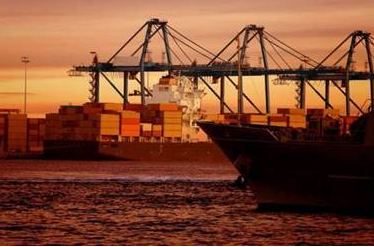
AIR FREIGHT
Heightened security measures have made air freight logistics more complex, leading some airlines to reroute their flights in order to avoid conflict zones.
Additionally, increased fuel requirements have reduced available space in airline cargo capacities leading to very volatile rates.
Indeed, global air cargo market demand rose by 11% year on year for a third consecutive month in March and it was no surprise that e-commerce and Red Sea shipping disruption helped propel volumes.
The average global airfreight spot rate in March increased by 7% WW from the previous month.
The Middle East and South Asia to Europe market continued to lead the growth of air cargo rates in March as the influx of air cargo demand caused by Red Sea concerns squeezed capacity on these lanes.
The average spot rate on this corridor was up 71% year on year.
While the Red Sea crisis has already led to a shift of large amounts of cargo traffic to air freight, the latest attacks in the Red Sea are expected to see air freight costs to Europe rise by 10-15%, as well as a rise in insurance costs.
Some airlines have cancelled flights from the Far East to Middle East destinations, including Iran, Jordan, Iraq, Lebanon and Israel; others had to re-route their flights, causing payload issues, longer transit times, warehouse congestion, and space issues.
Some airlines have stopped accepting new cargo until further notice.
SEA FREIGHT
The market remains dynamic, with a peak season which seems to take place earlier this year.
Experts have noticed a high ship occupancy rate and a dynamic trend in terms of bookings.
Shipments of household appliances, air conditioning equipment, solar panels and garden furniture are particularly driving demand.
However, in the space of a few days, the level of geopolitical tension has increased significantly in the Middle East.
What would be the concrete consequences for international transport, while the Middle East remains an essential node between Asia and Europe?
Open regional war could first make the Strait of Hormuz impassable.
If the oil market was strongly impacted, so would containerized trade, since it is the access route to Dubai.
The fact is Jebel Ali port is the 12th container gateway in the world and a major hub for sea-air solutions between Asia and Europe since the Red Sea crisis (+114% in one year, WorldACD).
For air freight, this kind of situation would also have serious consequences: it would reduce the possibilities for intermodal transshipments in Dubai, creating pressure on traditional maritime trade.
A likely surge in oil prices coupled with the need to bypass the zone would push rates higher.
Indeed, this would involve an extension of routes (via Egypt and Saudi Arabia) and certainly some congestion on the tarmacs.
In any case, the geopolitical situation and an early peak season now suggest a rise in ocean spot rates from May.
It is no coincidence that CMA CGM has just announced a new GRI (General Rate Increase) for May 1st.
On Asia-Europe trades, there are very high ship occupancy rates until at least mid-May.
Demand is stronger than expected: Labor Day in China, from May 1st to 5th does not help matters and pushes shippers to anticipate.
Seeking to take advantage of the moment, companies announced significant increases in their FAK rates in May.
The increase should concern ports in Northern Europe as well as those in the Mediterranean.
The other setback of this global dynamic is the return of port congestion in Asia, particularly in China in the ports of Bohai, the Yangtze, the Pearl River Delta, but also in the hubs of Qingdao, Ningbo and Shanghai (up to 2 days late).




